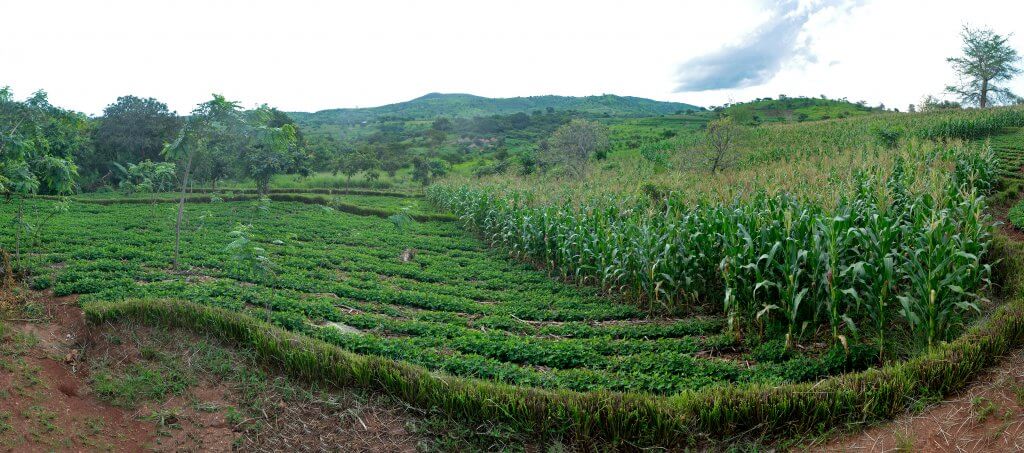How Climate Interactive Can Contribute to Climate-Smart Agriculture Policymaking
By
Charles (Skuk) Jones
November 10, 2016
 A farmer’s field in Malawi under conservation agriculture practices. Photo credit: T. Samson/CIMMYT
A farmer’s field in Malawi under conservation agriculture practices. Photo credit: T. Samson/CIMMYT
The world has arrived at a special moment: the importance of agriculture in Africa is being realized and intersecting with opportunities for policymaking. Climate Interactive is partnering with Mohammed VI Polytechnic University (UM6P) in a multiyear project to model the intersections among agriculture, production, emissions and resilience. We are excited to apply our skills and methods to help decision makers understand what works in climate-smart agriculture.
We are building a framework and a decision-support simulation tool that represents a country’s agricultural system and its associated outputs, emissions, and vulnerabilities. We are looking at questions about how national policies can achieve the three goals of climate-smart agriculture: increased production, lower emissions, and improve system resilience – all under changing conditions.
An important consideration is that adaptation and mitigation are linked. There is no adapting to a world with a four-degree Celsius temperature change – the pace of adaptation would be too great for farmers, crops, and industry. Thankfully, countries are aiming to limit temperature to well-below 2°C. This temperature goal means agricultural adaptation is more feasible, and indeed farmers already have begun to adapt to changing conditions. The premise of climate-smart agriculture is that some of these changes in agricultural practices benefit efforts on all of the three dimensions of mitigation, adaptation, and development. Agriculture is an economic sector that can solve multiple problems simultaneously.
 What will be the future of food and emissions?
What will be the future of food and emissions?
Some African countries have been including policies to promote these goals in their Nationally Determined Contributions, Mitigation and Adaptation Strategies, and various kinds of “Green Development” plans. There are various kinds of tools they have to do so. One the one hand, there are platforms and fora for sharing the best practices and latest research coming out of agricultural scientists and practitioners. National plans can be based on scaling-up project ideas. From the opposite scale, there are tools and consultants that help analyze economy-wide or sectoral impacts.
Our simulation will build upon and complement these approaches. We will offer a tool that provides a unifying framework to explore possible futures and decide on agricultural policy. We will provide a way of connecting specific actions to national outcomes with our usual rigor and transparency.
In doing so, we build on our core areas of experience. We are practiced at looking at solutions with multiple positive impacts, while not falling into wishful thinking. We have been adding up the results of specific actions to help people hold decision-makers accountable. Our tools are presented in ways that make information clear and help people learn for themselves what actions are needed.
Visit one of our events in Marrakech to learn more. Contact Travis Franck for more information about the CSA project.

 A farmer’s field in Malawi under conservation agriculture practices. Photo credit: T. Samson/CIMMYT
A farmer’s field in Malawi under conservation agriculture practices. Photo credit: T. Samson/CIMMYT What will be the future of food and emissions?
What will be the future of food and emissions?